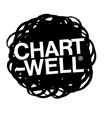Exercise for a creative life

The visual arts offer us all the opportunity to exercise for a creative life. Taking inspiration from the thinking and making skills of artists, interacting with the visual arts enables us to tap into skills important to us all. But what are the skills to focus on when we look at and make art? How are they transferable to other aspects of our lives? This has been one of the topics of enquiry for The Chartwell Trust through research conducted by the University of Auckland’s Creative Thinking Project; through the Chartwell Collection held at the Auckland Art Gallery Toi o Tāmaki and the development of a creative mind tool for everybody called Squiggla.
Art, as an interaction of intention, intuition and intellect, has the ability to communicate on different levels – individually and collectively. To start with, the visual arts act as a gymnasium for our hearts and minds, so engagement with art enables us all to exercise and activate our senses and connect us more fully to the world. The visual arts are the most direct form of this sought after, imaginative creative thinking – as they use the creative mind, the process of making, the generation of ideas and deep personal engagement, connections to community and others around us, and the diversity and difference inherent in an empathetic, ambiguous, curious and playful way of thinking creatively about the world. Phew! It’s a big topic but creativity and wellbeing are two of the key issues we must understand better as we face the rapid changes happening in our world.
The good news is through art making we exercise skills like preparation, resilience, persistence, concentration and adaptability, and increase our use of intuitive, inventive thinking - triggering more of those AHHA moments. Curiosity drives this creative search.
Our sense of the familiar can be challenged when making art which can leave us doubting our own abilities. In fact, most of us do not value or nurture our creative abilities– with many actively ignoring, denying or suppressing them. Eventually, skills like fluid, divergent thinking combined with the capacity to cope with ambiguity become challenged. But as researchers in the field say, ‘if you think you’ve lost it, not to worry – you can get it back’! Through regular art making in an unpressured environment, it is possible to take risks, to test out and refresh these skills easily.

Drawing offers a very direct way to participation in art making. We know that most of us stop drawing at an early age, usually due to the pressures of either self-judgement or external judgement. Chartwell’s solution has been the development of Squiggla.org. This is an exercise tool for the creative mind, a non-judgemental offline mark making activity. If you strip away the pressure to ‘draw something representational’, you are left with the joy of pure, playful mark-making. It is an easy way for everyone to keep actively connected to ways of looking and making.
The joy of playfulness is an important skill. As Professor Bruce Sheridan has written, “play performs a significant role in the way human beings develop and learn.” He describes that in the play world, the usual rules and conventions don’t need to apply, allowing a freedom to imagine.
“The reality is that we are all inherently creative,” says Professor Peter O’Connor, Research Director of the Creative Thinking Project. He writes that through a willingness to take risks, to be curious, to be playful and to consider possibilities to make something not seen or imagined before, everyone can be creative.
Both participation and inspiration are key aspects for engaging with art. In fact, both these concepts are delivered through visits to public art galleries. For Chartwell, the Collection home is the Auckland Art Gallery Toi o Tāmaki and it is inspiring that organisations such as The Connect The Dots Trust collaborates to deliver art making programmes with a range of public galleries too. Public collections act as demonstration tools to reveal the creative processes in action within each artwork, each of which represents access to a kind of knowing or unknowing of the world – and as a viewer we can surrender to this process of aesthetically sensing the world. So public art galleries act as service stations where visitors fuel up on new ways to think. The goal is that viewers, inspired by a public gallery visit, are encouraged to give ‘possibility thinking’ a try themselves! Just as a city provides stadiums for the body and libraries for the literary arts, so too do they provide public art galleries as gymnasiums for the mind.
It is heartening to learn that the benefits of participating in or viewing art has been clearly demonstrated in research across all ages. In New Zealand, the Te Ora Auaha Network is a helpful resource for those in the field of arts, health and wellbeing. In a recent UK paper, 'Older and wiser? Creative ageing in the UK 2010–19’, Dr Rebecca Gordon-Nesbit, a Research Fellow at King’s College London, reported that “creative participation can contribute to a longer, happier, healthier life. It can help to amplify the voices of older people and enhance their contribution to society. It can help to overcome negative stereotypes and reduce our fear of ageing. The time has come for the benefits of creative ageing to be realised.”
The Chartwell Trust has assisted Connect The Dots Trust to deliver programmes which show how the energy of creativity through art helps expand engagement with life for kaumatua. “Creativity provides both an opportunity for improved wellbeing, both on an individual and community level, but also gives makers a voice and a presence,” says Trust Director Andrea Gaskin. www.connectthedots.org.nz








